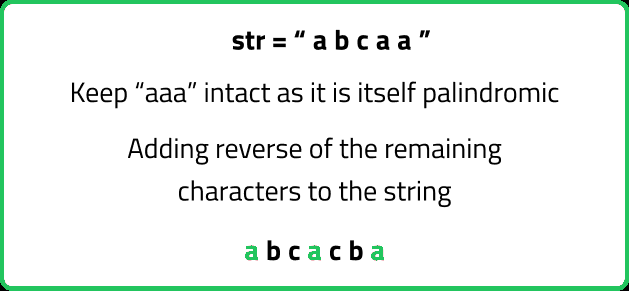Minimum insertions to make string palindrome
Dynamic Programming
DP on strings
Hard
Given a string s, find the minimum number of insertions needed to make it a palindrome. A palindrome is a sequence that reads the same backward as forward. You can insert characters at any position in the string.
Examples:
Input: s = "abcaa"
Output: 2
Explanation: Insert 2 characters "c", and "b" to make "abcacba", which is a palindrome.
Input: s = "ba"
Output: 1
Explanation: Insert "a" at the beginning to make "aba", which is a palindrome.
Input: s = "madam"
Constraints
- 1 <= s.length <= 1000,
- s consists of only lowercase English letters
Hints
- "The minimum insertions required to make s a palindrome is the number of characters not already part of the longest palindromic subsequence (LPS). Min Insertions=Length of s−Length of LPS(s)"
- "Compute LCS(s, reverse(s)) using Dynamic Programming (DP). The LCS of s and reverse(s) gives the LPS of s because a palindrome reads the same forward and backward."
Company Tags
Boston Consulting Group
Deloitte
Western Digital
Rakuten
Red Hat
Epic Systems
Seagate Technology
Splunk
Oracle
Target
Freshworks
NVIDIA
Square
Rockstar Games
PayPal
Wayfair
Philips Healthcare
Riot Games
Walmart
Morgan Stanley
Swiggy
IBM
Mastercard
Snowflake
Goldman Sachs
Google
Microsoft
Amazon
Meta
Apple
Netflix
Adobe
 Here the number of characters inserted will be equal to n (length of the string). This is the maximum number of characters we can insert to make strings palindrome.The problem states us to find the minimum of insertions. Let us try to figure it out:
Here the number of characters inserted will be equal to n (length of the string). This is the maximum number of characters we can insert to make strings palindrome.The problem states us to find the minimum of insertions. Let us try to figure it out:

